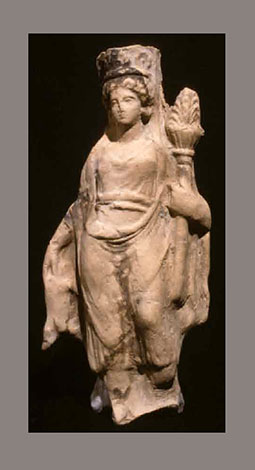 Methodologies for the study of productions, contexts and images
Methodologies for the study of productions, contexts and images
27 May – 1 June 2013
University of Catania (Italy)
Department of Humanistic Sciences
.
The Course
The Summer School is an advanced course in the most up to date theories and methods for the study of Greek coroplastic production from the Late Minoan period to the Hellenistic Age. Participation is open to students from Italy and abroad at the graduate level. The instructors are among the most qualified experts in the field of coroplastic research at a national and international level, who will share their insights into traditional and innovative approaches to the study of the coroplastic production of the Greek world through a combination of lectures, cases studies and practical excercises. The Summer School provides an ideal environment not only for the acquisition of information, but also for the exchange of ideas and discussions about the current state of knowledge of craft production in the Greek world.
The 6-day time span of the Summer School facilitates an in-depth consideration of the wide-ranging and diverse approaches to Greek terracottas studies that will encompass new research perspectives, the interpretation of social interactions and the religious contexts and archaeometric applications, among other areas of investigation.
.
Topics to be covered
The Summer School is organized as a series of frontal lectures divided into separate didactic modules, comprising the following themes:
I. Research Methodology
II. Greek coroplastic production from the wheel to the freehand modeling to the use of the mould: Greece and Crete
III. The Greek coroplastic production between mother city and the West: circulation of models, figurative languages, cultural identities
IV. Terracottas and contexts
V. Reading images
VI. Archaeometry
Monographic lectures are provided on particular contexts or more specific issues.
.
The laboratories
The laboratories are an integral part of the Summer School. These provide important first-hand contact with the material culture, as well engaging interaction between students and instructors.
Special attention will be paid to the West Greek coroplastic production and more specifically to Sikeliot terracottas. Thanks to the generousity of the Greek and Roman Archaeological Park of Catania and the Regional Archaeological Museum Paolo Orsi of Syracuse, students, guided by the instructors, will come into contact with some of the most important ensembles of Sicilian terracottas and in particular with the extraordinary votive deposit of Piazza S. Francesco at Catania (view link). Each laboratory will be introduced by a seminar on the material to be examined.
.
For further informations: http://coroplastic2013.ibam.cnr.it/
